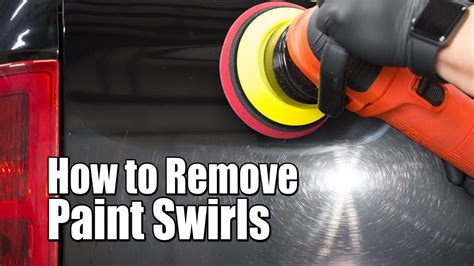Remove Paint Swirls: A Comprehensive Tutorial
Paint swirls, those annoying minor scratches and imperfections that mar the otherwise flawless finish of your car, are a common frustration for car enthusiasts. Fortunately, removing paint swirls doesn't require a professional detailer and their hefty price tag. This comprehensive tutorial will guide you through the process, equipping you with the knowledge and techniques to restore your car's paint to its former glory.
What Causes Paint Swirls?
Before diving into the removal process, understanding the culprits is crucial. Paint swirls are primarily caused by improper washing techniques. Using a dirty wash mitt or sponge drags abrasive dirt particles across the paint's surface, creating microscopic scratches. Automatic car washes, while convenient, often exacerbate the problem due to their aggressive brushes. Other contributing factors include environmental contaminants like airborne dust and tree sap.
Assessing the Damage: How Severe Are Your Swirls?
The severity of your paint swirls will dictate the approach you take. A quick visual inspection under direct sunlight will reveal the extent of the damage. Minor swirls might be barely noticeable, while deeper scratches may require more aggressive techniques. Using a detailer's light can highlight imperfections, making assessment easier.
H2: What Products Do I Need to Remove Paint Swirls?
The necessary products depend on the severity of the swirls, but generally include:
- Wash Mitt or Sponge: A high-quality microfiber wash mitt is essential for minimizing the risk of further scratching during the washing stage.
- Car Wash Soap: Use a dedicated car wash soap designed for gentle cleaning. Avoid dish soap, which can strip away protective waxes.
- Drying Towel: A plush microfiber drying towel is ideal for preventing water spots and minimizing friction.
- Detailing Spray: This helps lubricate the surface during the polishing process.
- Compound: For heavier swirl marks and scratches, a compound is needed to cut through the imperfections. Choose a compound based on your paint's hardness.
- Polish: Polish refines the surface after compounding, removing any haze and leaving a smooth, glossy finish.
- Wax or Sealant: This provides an added layer of protection to your freshly polished paint.
- Orbital Buffer (Optional): While possible by hand, an orbital buffer significantly speeds up the process and provides more consistent results. If using a buffer, ensure you're comfortable operating one safely.
Step-by-Step Guide to Removing Paint Swirls
1. Thorough Washing and Drying: Begin by washing your car meticulously. Two-bucket washing is recommended, using one bucket for soapy water and another for rinsing the mitt. Dry the car completely with a clean microfiber towel.
2. Assessment and Sectioning: Inspect the affected areas closely. Divide your car into manageable sections to ensure thorough and even application of products.
3. Compounding (If Necessary): Apply a small amount of compound to a polishing pad (or applicator pad if working by hand). Work in small sections, applying gentle pressure and using overlapping strokes. Remove the compound residue with a clean microfiber towel.
4. Polishing: Follow the compounding stage with polishing to remove any haze and refine the paint's surface. Use a polishing pad and apply a small amount of polish in the same manner as the compound.
5. Final Cleaning and Inspection: Wipe down the entire surface with a clean microfiber towel to remove any remaining product residue. Inspect your work closely under direct sunlight or with a detailer's light to ensure the swirls have been effectively removed.
6. Waxing or Sealing: Apply a coat of wax or sealant to protect the freshly polished paint and add extra shine.
H2: Can I Remove Paint Swirls Myself?
Yes, absolutely! While professional detailers possess advanced tools and experience, removing minor paint swirls is a manageable DIY project with the right supplies and patience. Starting with less aggressive products and practicing on an inconspicuous area is always recommended.
H2: What's the Difference Between Compound and Polish?
Compound is more abrasive than polish and is used to cut through deeper scratches and swirl marks. Polish refines the surface after compounding, removing any haze and enhancing the shine. Using a compound without polishing can leave a hazy appearance.
H2: How Often Should I Remove Paint Swirls?
The frequency depends on several factors, including your car's washing habits, environmental conditions, and how often you wax or seal your car. However, a thorough detailing and swirl removal every 6-12 months is a reasonable guideline for maintaining a pristine finish.
This comprehensive guide provides a solid foundation for tackling paint swirls. Remember, patience and attention to detail are key. With careful execution, you can restore your car's paint to its original glory and enjoy a flawless finish for years to come.

